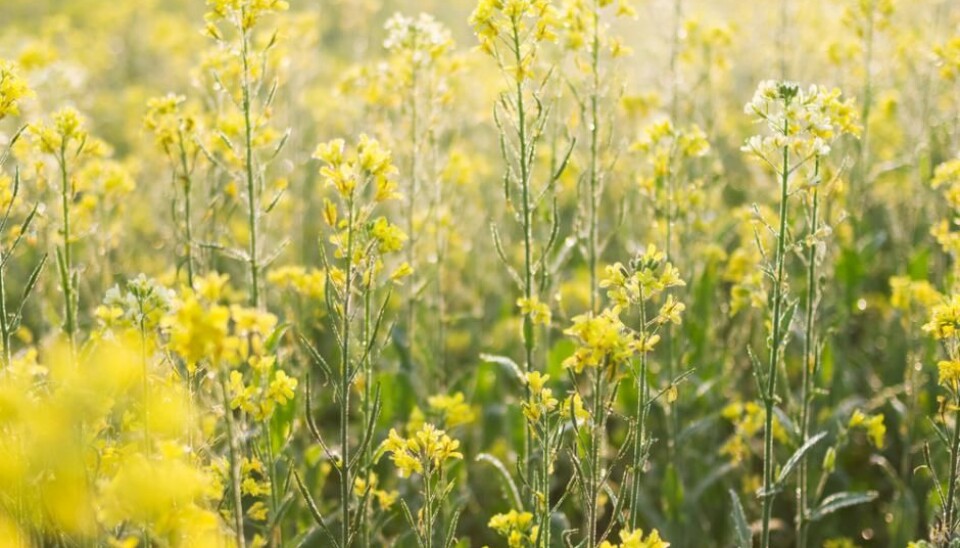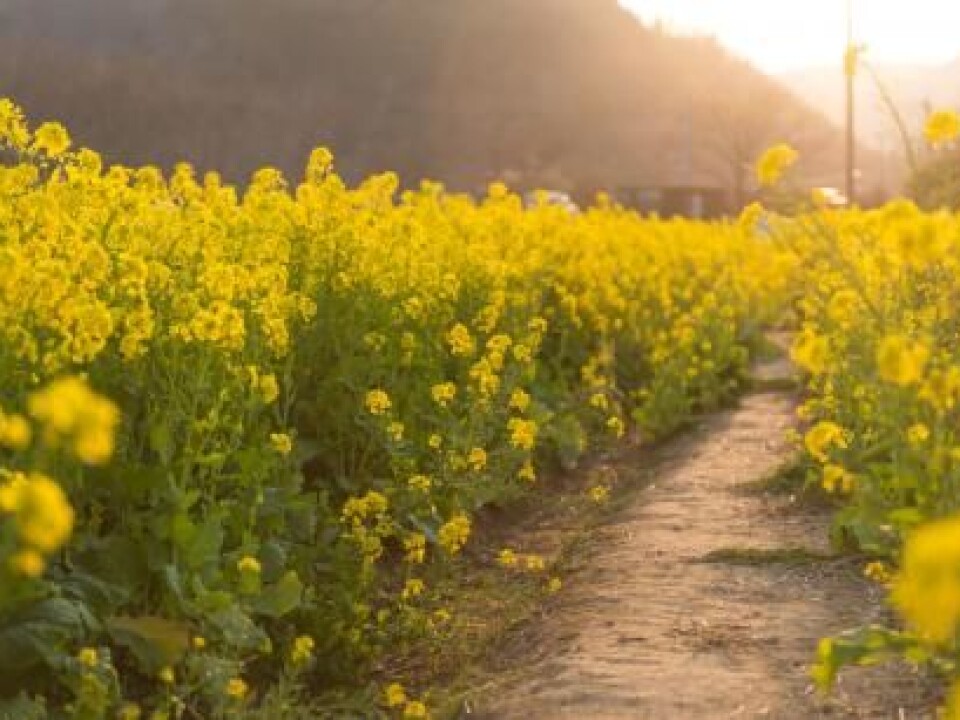
Mustard oil could soon replace rapeseed oil
New research shows that mustard could be an attractive alternative to rapeseed oil—the world’s third largest oil crop.
The world needs a vegetable oil that is both edible and can be used as biofuel.
Scientists may be able to do just that with a new variant of the mustard plant, which can be used to make oil and feed for animals and can be cultivated in climates with extreme heat and drought.
The plant has already been tested in large-scale cultivation studies and has the potential to replace rapeseed as the world’s third biggest source of oil, say the scientists behind the new research.
“There’s a large market for oil-producing crops that can be grown in warm and dry regions, for example Western Canada, India, and Australia. Until now, it’s not been possible to use rapeseed as it can’t tolerate heat, while the mustard plant contains toxins that means we couldn’t use it,” says Hussam Hassan Nour Eldin from the DynaMo Basic Research Centre at the University of Copenhagen, Denmark.

“We’ve now managed to remove the toxins from the mustard seed so that it is much more attractive to farmers,” says Eldin.
The new research is published in the scientific journal Nature Biotech.
Big potential
The new results are not only significant for farmers in warmer countries, but also in Western Europe, says Professor Mathias Neumann Andersen from the Department of Agroecology at Aarhus University, Denmark.
The same technique used to remove toxins from mustard seeds could also be applied to waste products from the oil industry in both mustard and rapeseed plants. This could produce large amounts of protein for animal feed, says Andersen.
Farmers could sell the oil residues for protein supplements and thereby increase profitability in the production of many crops.
“It’s vitally important that we make use of this high-value protein, which we’re not doing well enough today and therefore have to import large amounts of soy protein from South America to feed our animals,” says Andersen.
“These results [could] make the two plants less toxic and thereby exploit the resource that we already have to hand,” he says.
Ready in two to three years
The scientists behind the new study manipulated the mustard plant in the same way that nature itself creates variants out in the field, and subsequently cross-bred the plants until they ended up with the desired plant.
It is not a GMO so in principle it could be ready to sow in two to three years. GMO crops face a much longer approval process.
An initial trial has already been conducted in three large fields in Belgium. The tests showed that the plant contains just one third of the amount of glucosinolates as the original mustard plant.
“We’ve come three quarters of the way for the plant to be [useful] to farmers. But we estimate that the last part will take two to three years,” says Eldin, who is excited to be so close to the finishing line.
“It’s rare that scientists get to follow a research project the entire way from laboratory until when the plants are in the field and exposed to wind and weather. This is where we get the real results,” he says.
Mustard can grow where rapeseed cannot
Mustard plants are an interesting rapeseed replacement as it is much more robust. It can withstand many more pests and at the same time the plant is more resistant to drought and heat and does not lose its seeds like rapeseed.
So it can be grown in regions where rapeseed cannot, says co-author Barbara Ann Halkier, head of the DynaMo research centre at the University of Copenhagen, Denmark.
“Many places around the world cultivate two difference crops in the fields. For example, wheat and rapeseed, where you grow wheat in one year and rapeseed the next. Many dry, warm countries have struggled to find a plant that can be grown together with wheat and this is where mustard plants [with low] glucosinolates in the seeds are very interesting,” she says.
---------------
Read more in the Danish story on Videnskab.dk
Translated by: Catherine Jex






